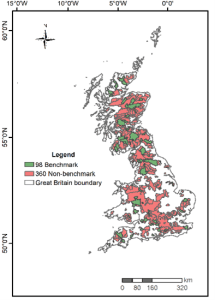JGI Seed Corn Funding Project Blog 2022-2023: Jin Zheng
Introduction:
The financial trading landscape is constantly evolving, driven by advancements in technology and the need for faster, more efficient decision-making. Traditional algo-trading strategies have become central features of modern financial markets due to their speed, accuracy, and cost-effectiveness. However, these strategies often rely solely on the analysis of present and past quantitative data, neglecting the importance of incorporating qualitative data in the decision-making process. To address this limitation, we aim to develop an integrated and intelligent algo-trading system that combines advanced technology, data integration, and intelligent decision-making.
Data Integration:
In financial trading, individuals collect diverse information from various sources, including market-based data, past performance, financial reports, public opinion, and news. Our integrated system seeks to leverage the power of data integration by combining market-based quantitative data with qualitative data sources. By integrating these different data types, we can gain a more comprehensive understanding of the financial landscape and make informed trading decisions.
Advanced Technology:
The integrated system will harness advanced technologies such as artificial intelligence (AI), cloud computing, and machine learning algorithms. These technologies enable the analysis and processing of vast amounts of data in real-time. AI algorithms can identify patterns, trends, and correlations that may not be immediately apparent to human traders. Cloud computing provides the scalability and computing power necessary to handle large volumes of data and perform complex calculations. By leveraging these advanced technologies, our system can enhance decision-making and improve trading performance.
Intelligent Decision-Making:
The core objective of our system is to enable intelligent decision-making in the trading process. While traditional algo-trading strategies focus on quantitative analysis, our integrated approach incorporates qualitative data, allowing traders to better assess potential risks and identify market trends. By factoring in qualitative data, traders can make more informed decisions and adjust their strategies accordingly. Intelligent decision-making is achieved through the application of AI and machine learning algorithms, which can analyze vast amounts of data and provide valuable insights to traders.
With support from the Jean Golding Institute, we successfully ran a hybrid workshop on Machine Learning and data science in finance. The workshop aimed to bring together experts and enthusiasts in the field to exchange knowledge, share insights, and explore the intersection of machine learning and finance. We were fortunate to have a line-up of esteemed speakers, including four external experts one internal expert who are renowned in their respective areas of expertise. Their diverse backgrounds and experiences enriched the workshop and provided valuable perspectives on the application of machine learning in finance.
We have successfully finished the development of a robust data pipeline and have created a unified API that efficiently retrieves data from various sources. We have implemented effective data cleaning techniques and implemented measures to filter out spam. Additionally, we have utilized Graph Neural Networks (GNN) to determine the influence rate of each account and calculate the daily sentiment rate for several stocks with significant market capitalization. Furthermore, we have incorporated predictive models into our system.
Moving forward, our next objective is to create a cloud-based web service that empowers users to build their own trading robots, develop unique trading strategies, and design customized trading algorithms. To enhance the user experience, we will incorporate advanced data visualization techniques, allowing traders to effortlessly interpret and analyze the vast array of information available. Moreover, we aim to enhance the system’s capabilities by integrating machine learning algorithms for improved decision-making and risk management. Our ultimate goal is to create a user-friendly and versatile platform that caters to the needs of researchers, individual traders, and students alike. Through this platform, users will be able to gain practical experience, enhance their financial knowledge, and utilize cutting-edge technologies in the field of algorithmic trading.



